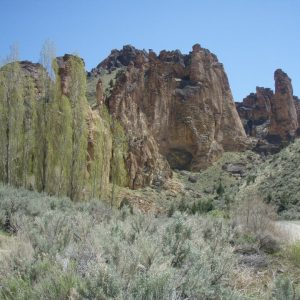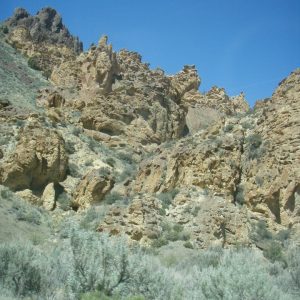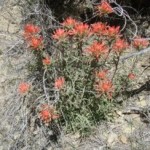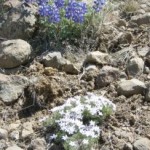Today marks the last day of my CLM internship in Vale, Oregon. It’s pretty amazing how time as flown by. It seems like it was July just yesterday. However, it’s obvious that the seasons are starting to change. September has brought rain and thunderstorms. I never thought I would see torrential downpour in this part of the country but it still happened last week. We had been scheduled to do a camping overnight trip in Leslie Gulch, surveying for Senecio ertterae. It’s a good thing that we didn’t go because when we arrived for a day trip the next day, the evidence of flash floods were everywhere and we were blocked by washed out roads. Living in eastern Oregon has been almost like living in a different country for me. Ranching is the predominant way of life. Lightening-caused fires are a constant summer time threat. Smoke from the fires leads to days of poor air quality. Water erosion is not a gradual process: the landscape is so barren that one large water event can move huge amounts of dirt. Birds are everywhere: quail, chuckars, kestrals, ring-necked pheasants, and killdeer. I also find myself with an acute awareness that if I were stranded out on these landscapes, I would not survive for very long. It’s humbling to be reminded that despite all of our constructs of modern civilization, nature is still in charge.
The sagebrush has been interesting to experience but it won’t be a moment too soon for me to go back to living among trees. The people who grew up here say that they get clastrophobic in forests; they don’t feel comfortable if they can’t see the landscape for tens of miles around. I think I’m the opposite; I almost feel uncomfortable without the cover.
One of the things I think about a lot is how much potential there is for renewable energy on public land out here. While it doesn’t look like we have much, there is a huge wealth of wind, sun, and geothermal. There are relatively few people who would be bothered by having renewable energy projects nearby. There are large amounts of land that have already been overrun by cheat grass and/or other invasives and can really not get that much worse in terms of disturbance. Despite all this, according to my mentor, there is one single wind farm of about five windmills on all of BLM land in Oregon. We went to see the project and look at the relatively small level of disturbance it posed on the flora in the area where it was placed. The BLM is already heavily involved with mining and ranching. I really hope that in the future, there is a push for renewables on public land because they are already there, just waiting to be tapped.
My next adventure will be a 10 1/2 month Americorp position with the Center for Natural Lands Management in Olympia, Washington. I will be doing prairie restoration science. I think that the botany skills I’ve gained during this summer helped me to get this position. I’m excited about this opportunity and happy to get back to a wetter environment (though, check back with me in a couple months…. I might be complaining about rain). If any current or future CLM interns happen to be in that area, look me up! I’ll always have a couch for crashing. Anyway, cheers! It’s been great seeing how things have progressed this summer. I wish everyone luck with whatever their future endeavors are.













